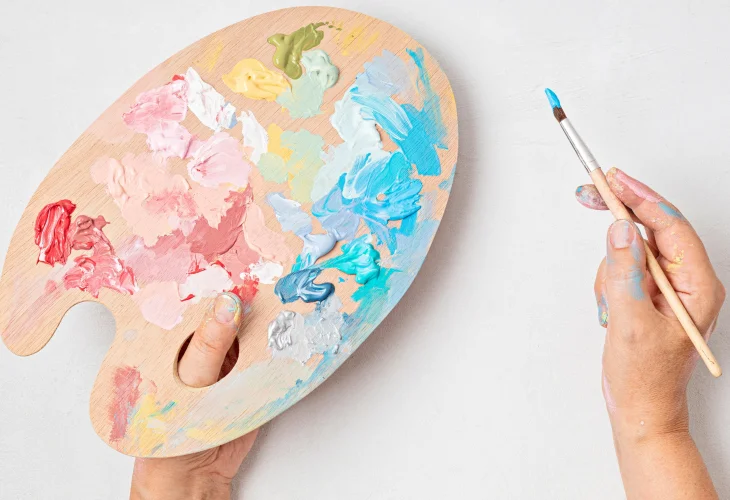Art Therapy: How to Release Repressed Emotions Through Painting?
Art therapy is a creative and unique way to improve mental health, offering a safe and non-threatening approach to life's challenges. How does this method work, and who can benefit from it?
 (Photo: shutterstock)
(Photo: shutterstock)In times of stress, uncertainty, and emotional challenges, many people seek ways to find peace and express themselves. Art therapy is one of the most effective methods, combining creativity and art as tools for mental health treatment. It allows individuals to express feelings, relieve tension, and establish a deeper connection with themselves—all without the need for words. What is art therapy, how does it work, and who can benefit from it?
What is Art Therapy?
Art therapy is a therapeutic approach that uses artistic creation tools such as painting, sculpting, photography, and drawing to help patients express themselves and process emotional experiences. Unlike traditional therapy that relies on verbal communication, art therapy allows non-verbal dialogue, enabling individuals to express their inner world in ways that words alone may not convey.
The therapy is conducted under the guidance of a certified art therapist, who directs the patient in the creative process and helps interpret the meaning behind the creation. The goal is not to create 'beautiful' art, but to express emotions, experiences, and thoughts that may be difficult to articulate with words.
How does Art Therapy Work?
The power of art therapy lies in its ability to bypass intellectual filters and reach directly into emotions. In the creative process, individuals engage with artistic materials freely, allowing them to express themselves authentically and subconsciously. Drawing, coloring, sculpting, or any other creative action can help release tension and lead to new understandings of complex emotions or situations.
By working on a creative project, patients can experience a sense of control and success, even when life outside therapy feels chaotic or overwhelming. Additionally, the creative process enables patients to identify emotional patterns and gain deeper insight into the connections between their feelings and behaviors.
Who Can Benefit from Art Therapy?
Art therapy is suitable for a wide range of people, including children, teenagers, and adults. For example, children often struggle to articulate their emotions verbally, so the creative process can be a powerful tool to express themselves and cope with challenging emotional situations like separation, changes in family dynamics, or even anxiety.
Adults dealing with trauma, depression, anxiety, or simply daily stress can also benefit from the creative process. The therapy can be a way to reconnect with feelings of joy, playfulness, and spontaneity, which may have been forgotten over the years. Essentially, anyone interested in exploring themselves, developing expressive abilities, and gaining a deeper understanding of their emotions can benefit from art therapy.
The Benefits of Art Therapy
Emotional Release: The creative process allows for the expression of deep emotions in a non-verbal way, helping to cope with difficult situations and gain new perspectives.
Improved Self-Confidence: The ability to create something personal and tangible can enhance self-esteem and a sense of personal capability.
Deep Connection with Emotions: Through creation, individuals can connect with emotions and experiences that are not always consciously accessible, identifying emotional patterns previously unrecognized.
Reduction of Stress and Anxiety: Creation can serve as a calming tool that allows focus on the present and the process, thereby reducing feelings of stress and anxiety.
In art therapy, there is no need to be an artist to enjoy its benefits—all that is required is a willingness to try and express oneself. The creative process can provide a space for the soul to blossom and renew, especially in times when words are simply not enough.
If you are seeking a way to connect with your emotions, relieve stress, or simply get to know yourself more deeply, art therapy could be a unique and intriguing path for you.

